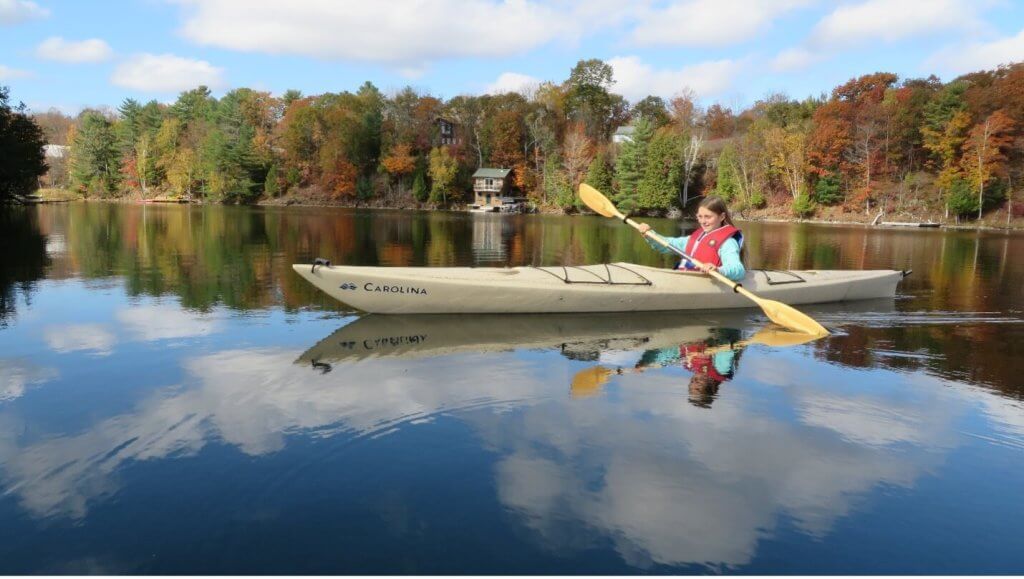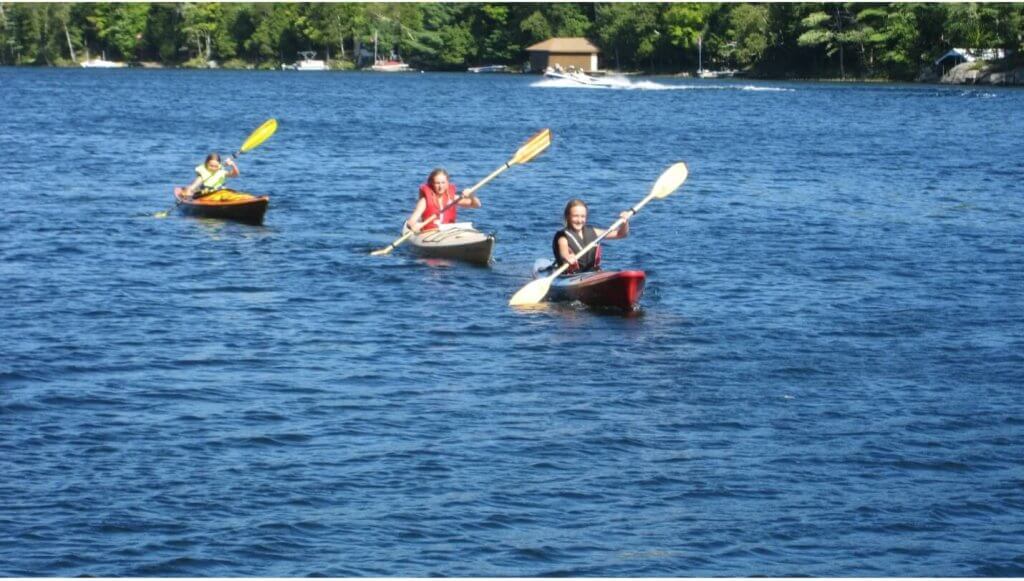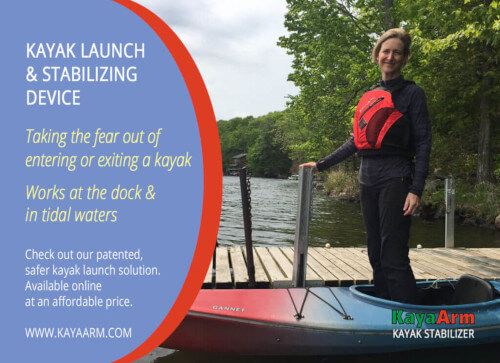Understanding kayak speed is an integral part of preparing for an adventure on the water. Whether for recreational purposes or competitive kayaking, how fast one can paddle is influenced by a multitude of factors, from the paddler’s own strength and stamina to the type of kayak being used. The speed of a kayak is typically measured in knots, with recreational kayakers averaging speeds of 2 to 3 knots, equivalent to about 2.5 to 3.5 miles per hour.

The performance of a kayaker can be affected not only by personal physical capabilities but also by environmental conditions. As they navigate through the water, kayakers must consider the impact of elements such as water flow, the weather, and even the weight distribution within the kayak. For those looking to refine their paddling skills and learn more about the sport, gaining a solid foundation in kayaking basics is essential. A thorough understanding of these compelling factors can assist kayakers in maximizing their techniques to achieve better speed and efficiency on the water.
Key Takeaways
- Kayak speed is impacted by the paddler’s physical attributes and the kayak design.
- Environmental elements like weather and water conditions play a significant role in paddling performance.
- Knowledge of kayaking fundamentals helps in improving overall speed and control.
Fundamentals of Kayak Speed
Kayak speed is influenced by design, purpose, and environmental conditions. Knowing how these factors interplay helps kayakers maximize efficiency and enjoyment on the water.
Understanding Hull Speed
The hull speed is a critical concept in determining how fast a kayak can go. It’s the speed at which the bow and stern waves synchronize to create the least resistance. With a longer hull, a kayak can achieve a higher hull speed due to reduced wave drag. Touring kayaks and sea kayaks are often designed to approach or exceed this theoretical speed limit, offering a blend of stability and efficiency optimized for long distances.
Types of Kayaks and Their Speeds
Different types of kayaks are designed for varying speeds and purposes. Here’s how they typically stack up:
- Recreational kayaks: Short and wide, offering high stability but slower speeds, with an average speed of 2-3 mph.
- Touring kayaks: Longer and narrower, designed for distance paddling at higher speeds, around 3-4 mph.
- Fishing kayaks: Similar to recreational kayaks, prioritizing stability and storage over speed.
- Whitewater kayaks: Compact and agile, built for maneuverability in rapid waters, not for high speeds.
- Sea kayaks: Built for open waters, combining length for speed and width for stability, sometimes hitting the maximum speed of around 5 mph.
The Role of Water Conditions
Water conditions significantly impact kayak speed. Choppy or turbulent waters can reduce one’s speed, while calm, flat waters are ideal for attaining maximum speeds. It’s not just about the type of kayak; it’s about how the paddler adapts to the water they are on. Advanced kayakers might maintain higher speeds by employing efficient paddling techniques even in less-than-ideal conditions.
Factors Influencing Kayaking Performance
When it comes to kayaking performance, various elements come into play, including paddle selection, kayak design specifics, and the paddler’s physical prowess. Each aspect contributes uniquely to the efficiency and speed achieved on the water.
Importance of Paddle Choice
Choosing the right paddle can have a significant impact on kayaking speed and stamina. Paddles with lighter materials can reduce arm fatigue, allowing for longer periods on the water. Moreover, the blade shape directly affects stroke efficiency—narrower blades promote a higher cadence, while wider blades offer more power per stroke. The length of the paddle also matters; longer paddles might suit taller individuals or those in wider kayaks, while shorter paddles are better for high-stroke rates and more maneuverable crafts.
Impact of Kayak Design
The physical attributes of the kayak heavily influence its performance and speed. Key design factors include:
- Hull Shape: V-shaped hulls slice through water efficiently and aid in straight-line tracking, while flat hulls increase stability.
- Length and Width: Longer kayaks generally cruise faster and track better, whereas wider kayaks offer more stability at the cost of speed.
- Material and Weight: Lightweight materials such as carbon fiber enhance speed but can be more costly. A kayak’s measurements and design strongly affect its pace, with lighter, stiffer kayaks typically achieving better performance.
- Cargo and Gear: Additional weight from gear or cargo can slow a kayak down and affect its handling.
Fitness and Technique
Lastly, the kayaker’s physical condition is pivotal. Strength, endurance, and stamina underpin a kayaker’s ability to maintain speed. Training to enhance these physical traits directly translates to improved performance. The paddler’s skill level and paddling technique shape their efficiency in the water—experienced kayakers can navigate and accelerate with minimal wasted motion. Technique drills and core fitness programs can elevate a kayaker’s ability significantly. The kayaker’s physical fitness level can make a discernible difference, especially over long distances or in challenging conditions.
Environmental Conditions and Their Effects

Kayakers often find that their speed on the water is significantly influenced by environmental elements. These conditions can either aid their journey or present challenges that require skill and experience to navigate.
Navigating Waterways
When kayaking in rivers, the presence of currents can greatly affect speed. A strong downstream current can propel a kayak quickly, making the paddler feel more efficient. Conversely, heading upstream against the current often requires more energy and decreases overall speed. Ocean kayakers must be mindful of ocean currents and tides, which can change the difficulty of a paddle; an outgoing tide can make exiting a harbor more strenuous, while an incoming tide may provide a helpful boost.
Weather and Climate Considerations
Kayaking under various weather conditions can introduce factors such as wind resistance and gusts, which can either slow a paddler down or accelerate their pace if the wind is at their back. Choppy water created by wind can make a kayak less stable and reduce speed. In terms of climate, temperature doesn’t directly affect kayak speed, but extreme conditions can influence a kayaker’s energy levels and performance on the water. Understanding and anticipating weather and water conditions ensures better preparation and a more enjoyable kayaking experience.
Frequently Asked Questions
What factors influence how fast you can paddle a kayak?
Several elements affect kayaking speed, such as the kayaker’s skill level, the kayak’s design, water conditions, and even the choice of paddle. Understanding these factors can help one optimize their paddling efficiency. Kayak types and paddle choice significantly impact performance, as detailed on Kayak Addicts.
How quick can you go in a racing kayak compared to standard models?
Racing kayaks are designed for speed, often achieving much faster velocities than standard models due to their narrow and long build. They focus on minimizing resistance and maximizing glide through the water.
On average, what speed can you achieve with a touring kayak in calm conditions?
In calm conditions, a touring kayak can average speeds of about 2-3 miles per hour. Touring kayaks are designed for stability and comfort during longer trips. For further insights, visit Performance Kayak.
What’s the record for the fastest time in a kayak?
The record for the fastest kayaking speed is 39 miles per hour (62.94 km per hour), as documented in the Guinness Book of World Records. This impressive feat showcases the potential of kayaks under extraordinary conditions.
For an easy-going kayak trip, what’s a chill pace to aim for?
For a leisurely excursion, aiming for a relaxed pace of about 2 miles per hour can make for an enjoyable and stress-free kayaking experience. This allows one to appreciate the surroundings without exerting too much energy.
Can you cover some serious distance in a kayak in just half an hour?
Yes, a paddler can cover a respectable distance in a kayak in half an hour, typically between 1 and 1.5 miles, depending on their paddling speed and the kayak’s capabilities.
How much does a kayak weigh and its impact on speed?
Kayak weight varies based on material and size but typically ranges from about 20 to 80 pounds. A lighter kayak often translates to increased speed and easier maneuverability, while heavier models may provide more stability but require more effort to paddle quickly.

